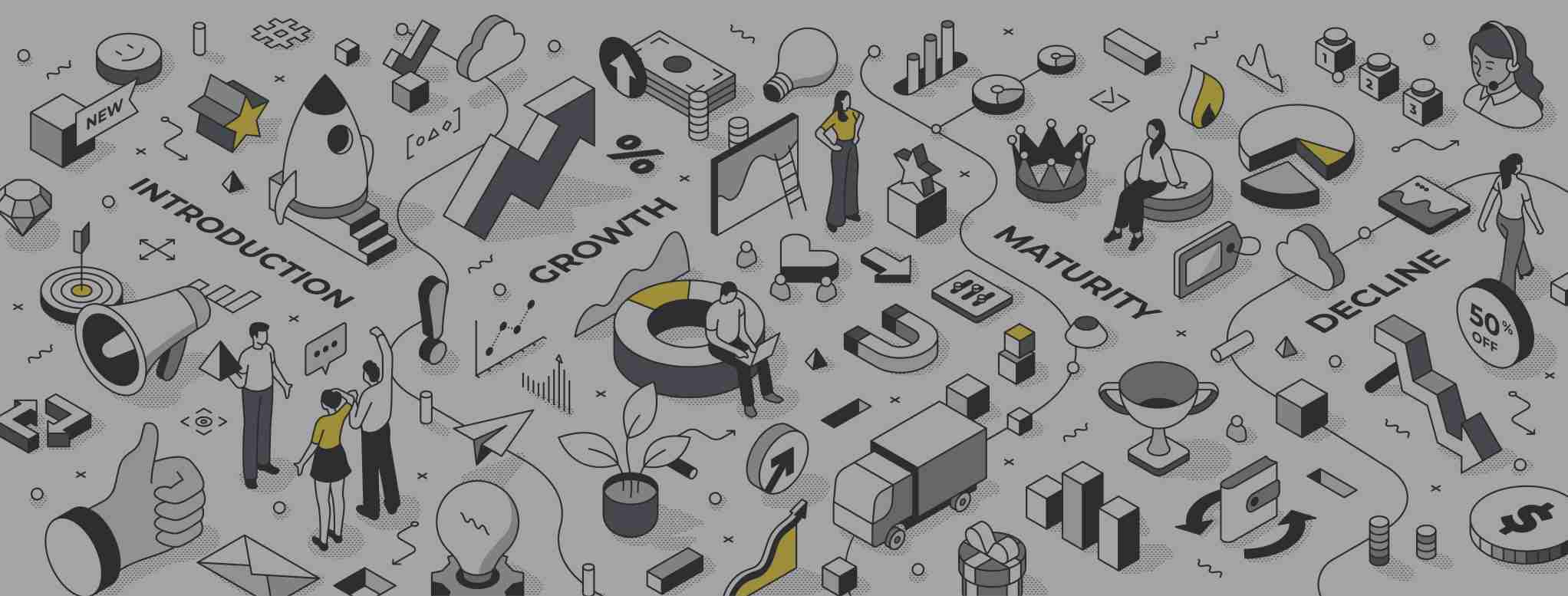A well-crafted messaging strategy is a necessity for B2B SaaS and Fintech. Digital BIAS, an award-winning product marketing agency, specialises in creating impactful messaging strategies that resonate with target audiences and drive business success. This article, part of our ARISE™ GTM methodology series, delves into the need, value, and approach to building a winning messaging strategy.
ARISE™ is an acronym for Assess, Research, Ideate, Strategise and Execute. The ARISE™ methodology is a comprehensive approach to GTM combining product marketing principles with buyer enablement and strong customer success onboarding programmes. Messaging is a key component of the Ideate stage, including positioning, value proposition design and storytelling.
The Need for a Messaging Strategy
A messaging strategy is essential for several reasons:
- Clarity and Consistency: It ensures that all communications are clear and consistent, helping to build a strong brand identity. Inconsistent messaging can confuse potential customers and dilute brand recognition.
- Differentiation: In crowded markets like B2B SaaS and Fintech, a unique messaging strategy helps differentiate your brand from competitors. It highlights your unique selling propositions (USPs) and communicates why your brand is the better choice.
- Targeted Communication: A well-defined messaging strategy allows you to tailor your messages to specific audience segments, addressing their unique pain points and needs. This targeted approach increases the relevance and impact of your communications.
The Value of a Winning Messaging Strategy
The benefits of an effective messaging strategy are manifold:
- Increased Brand Awareness: By consistently communicating your brand's value proposition and differentiators, you enhance brand recognition and recall among your target audience.
- Enhanced Customer Engagement: Targeted and relevant messaging resonates more deeply with your audience, fostering stronger emotional connections and engagement.
- Higher Conversion Rates: Messaging that speaks directly to your audience's needs and desires can significantly boost conversion rates. It helps potential customers see the value in your offerings and motivates them to take action.
- Long-Term Loyalty: Consistent and authentic messaging builds trust and loyalty over time. Customers are likelier to remain loyal to brands that communicate transparently and consistently.
Approach to Building a Winning Messaging Strategy
Building a winning messaging strategy involves several key steps:
Define Clear Goals
Your messaging strategy should be goal-driven. Establish clear, specific, measurable, attainable, relevant, and time-bound (SMART) goals that will guide its development and execution.
Understand Your Target Audience
Conduct thorough research to understand your target audience's demographics, behaviours, needs, preferences, and pain points. Develop detailed buyer personas for each industry segment you're targeting. For B2B SaaS and Fintech, this may include roles like:
- C-suite executives (CTO, CFO, CIO)
- IT managers and directors
- Finance professionals
- Operations managers
Research their specific pain points, goals, and decision-making processes. This understanding will form the foundation of your messaging strategy.
Craft Your Core Message
Develop a core message that encapsulates your brand's unique value proposition. This message should be clear, concise, and compelling, addressing the primary needs of your target audience and highlighting what sets your brand apart from competitors.
This should be concise (10-25 words) and highlight your product's unique value. For example:
"Streamline financial operations and enhance security with our AI-powered fintech solution."
Align with Brand Values
Ensure your messaging aligns with your brand's vision, mission, and values. Consistency in messaging across all channels reinforces your brand identity and builds trust with your audience.
Choose the Right Channels
Identify the most effective communication channels for reaching your target audience. Tailor your messaging to fit the context and format of each channel, whether it's social media, email, website content, or paid advertising.
Test and Optimise
Regularly test your messaging to see what resonates best with your audience. Use A/B testing, surveys, and feedback to gather insights and refine your messages. Continuously optimise your strategy based on these learnings to stay relevant and effective.
A robust messaging strategy is crucial for the success of B2B SaaS and Fintech. Digital BIAS leverages its deep expertise to help companies craft and execute winning messaging strategies that drive brand awareness, customer engagement, and long-term loyalty.
By defining clear goals, understanding the target audience, crafting compelling core messages, aligning with brand values, choosing the right channels, and continuously optimising, businesses can create impactful messaging that stands out and resonates.
You can create more resonant and effective communications that drive engagement and conversions by tailoring your messaging strategy to address the specific needs, pain points, and aspirations of different segments within B2B SaaS and Fintech industries.

Focus on Benefits, Not Just Features
While technical specifications are important in B2B SaaS and Fintech, your messaging should primarily emphasise how your product solves problems or improves processes. For instance:
- "Reduce transaction processing time by 50%"
- "Enhance regulatory compliance with real-time monitoring."
Address Industry-Specific Pain Points
Tailor your messaging to address the unique challenges faced in different sectors of B2B SaaS and Fintech. For example:
- For banking: "Streamline KYC processes and reduce fraud risk"
- For investment firms: "Optimise portfolio management with AI-driven insights."
Differentiate from Competitors
Highlight the unique selling propositions (USPs) that set you apart in the market. This could include:
- Proprietary technology
- Industry-specific expertise
- Superior customer support
- Seamless integration capabilities
Use Clear, Jargon-Free Language
While your audience may be technically savvy, clear and concise messaging is still crucial. Avoid excessive jargon and focus on communicating value clearly.
Leverage Social Proof
Credibility is paramount in B2B SaaS and Fintech. Incorporate customer success stories, case studies, and testimonials relevant to each industry segment you're targeting.
Align Messaging with the Buyer's Journey
Create messaging that addresses different stages of the buying process:
- Awareness: Educational content about industry trends and challenges
- Consideration: Comparative information and detailed product benefits
- Decision: ROI calculators, free trials, and implementation support details
Emphasise Security and Compliance
Given the sensitive nature of financial and business data, highlight your product's security features and compliance with relevant regulations (e.g., GDPR, PCI DSS).
Adapt Tone and Style
While maintaining professionalism, adjust your tone to suit different audience segments. For example, messaging for innovative fintech startups might be more dynamic and forward-thinking, while messaging for traditional financial institutions might emphasise stability and reliability.

There are many things to consider when designing a messaging strategy. Companies often run into brick walls with a “one and done” approach to broad messaging that rarely resonates with the right audience. Tech companies, in particular, often opt for mass messaging that rarely drives the required conversion rates. Ultimately, the process capitulates, with the “fisherman” landing in deep water.
What are the Key Metrics to Measure the Success of Messaging Strategies in B2B SaaS and Fintech
For B2B SaaS and Fintech industries, measuring the effectiveness of your messaging strategy is intrinsic to your long-term success in optimising marketing efforts and achieving business goals. Here are the key metrics to track:
1. Brand Awareness Metrics
- Impressions: The number of times your content is displayed, regardless of clicks.
- Reach: The total number of unique users who have seen your content.
- Search Engine Rankings: Track your brand’s rankings in search engine results pages (SERPs) for relevant keywords and phrases. Higher rankings indicate strong organic visibility and relevance.
2. Customer Perception Metrics
- Net Promoter Score (NPS): Measures customer loyalty and satisfaction by asking how likely they are to recommend your product to others.
- Customer Satisfaction Score (CSAT): Gauges customer satisfaction with a specific interaction or overall experience with your product.
- Brand Sentiment Analysis: Analyses customer feedback and social media mentions to gauge overall sentiment towards your brand.
3. Lead Generation Metrics
- Conversion Rate: The percentage of users who take a desired action after interacting with your message, such as signing up, downloading, or purchasing.
- Lead-to-Customer Rate: Measures the effectiveness of your sales funnel by tracking the percentage of leads that convert into paying customers.
- Cost Per Lead (CPL): The average cost to generate a new lead, helping you assess the efficiency of your lead generation efforts.
4. Engagement Metrics
- Click-Through Rate (CTR): The percentage of users who click on a link within your message. A higher CTR indicates that your message is compelling and relevant.
- Time on Page: The average time users spend on a webpage or content. Higher time on page suggests that visitors find the content valuable and engaging.
- Bounce Rate: The percentage of visitors who leave after viewing only one webpage. A high bounce rate may indicate that the content is not engaging or relevant.
5. Customer Retention Metrics
- Retention Rate: The percentage of users who return to your product after a certain period, indicating loyalty and ongoing engagement.
- Churn Rate: The percentage of customers who stop using your product during a given period. A lower churn rate signifies better customer retention and product satisfaction.
6. Revenue Metrics
- Customer Lifetime Value (CLTV): The total value a customer brings to your business over their entire relationship with your company. Higher CLTV indicates strong customer loyalty and satisfaction.
- Monthly Recurring Revenue (MRR): The total predictable monthly revenue generated from customers. Tracking MRR helps you understand your business's financial health and growth trajectory.
7. Content Engagement Metrics
- Page Views and Unique Visitors: Measures the total number of views and unique visitors of content assets, indicating the reach and visibility of your content.
- Content Downloads: Tracks the number of downloads for content assets, helping you identify the most popular types of content.
- SEO Performance: Includes metrics such as organic search traffic, keyword rankings, and backlink profiles. These metrics indicate the visibility and discoverability of your content in search engine results.
8. Competitive Metrics
- Market Share: Quantifies the percentage of total sales or revenue captured by your brand, helping assess your brand’s relative position and competitive strength in the market.
- Competitive Benchmarking: Compares your brand’s performance and positioning against key competitors across various categories, identifying competitive strengths and weaknesses.
By tracking these key metrics, B2B SaaS and Fintech companies can gain valuable insights into the effectiveness of their messaging strategies. Regularly analysing these metrics allows you to refine your messaging, optimise marketing efforts, and drive market growth and success.
If you need more help messaging, talk to our team. Our ARISE GTM framework is built on robust product marketing principles, including strong positioning, messaging, and value proposition. We align your sales, marketing, and customer success teams around the same central messaging pillars, ensuring the company communicates synonymously with its customers and prospects.
Complete the form in the footer to book time with the team.




